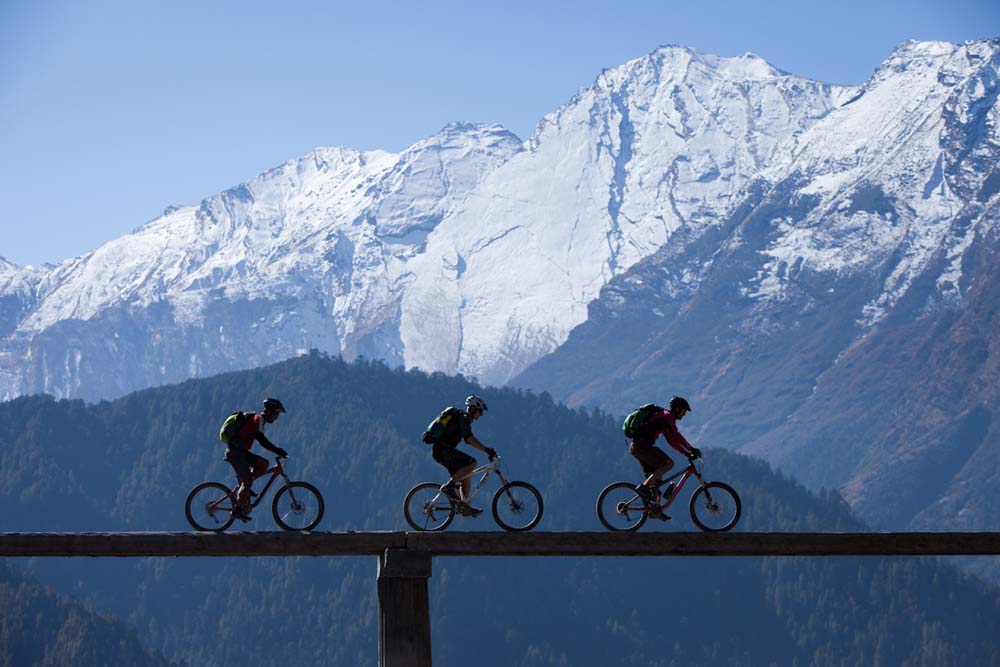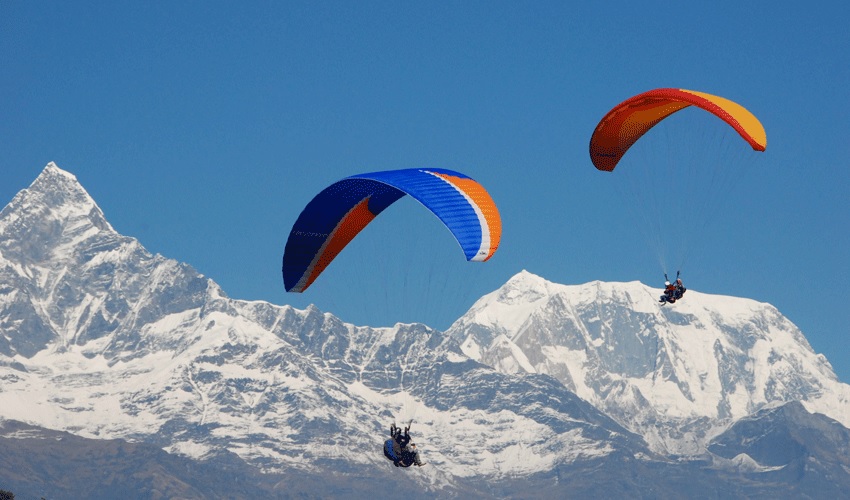Nepal has always been a dividing line between cultures and civilizations, and a crossroads for the commerce and culture. Here the plains of the subcontinent climb up to the high plateau of Tibet, the languages and people is India give way to those of china and the Hindu religion blends in to Buddhism. Nepal is often a complex blend of the two influences and this vitiation is further complicated by the diversity of ethnic group within the country.
Surrounded by the greatest of the heights of the Himalaya, the country Nepal is a land of eternal attraction, a where one visit is hardly ever enough. It is a land of colorful cultures, ancient history and people, superb scenery and some of the best walking on earth.
Nepal’s history is closely related to its geographical location, separating the fertile plains of India from the desert-like plateau of Tibet. Its position between India and china meant the country was able at times to play the role of intermediary – a canny trader between two great powers – while at other times it faced the threat of invasion. Internally, it’s history was just as dynamic, with city states in the hills vying with each other for power until one powerful king, Prithivi Narayan Shaha , overran then all that history is very visible today with the three great towns of the Kathmandu valley – Kathmandu, Patan and Bhaktapur – still bearing witness to their days as fiercely completive mediaeval mini kingdom. Indeed, in Nepal it is often possible to suspend belief and mentally roll the clock right back to the mediaeval era.
Behind the old temples and places of the Kathmandu valley, above and beyond the hills that surround the valley, another kingdom, rises skyward. The abode of snows, which is what Himalaya means in Sanskrit, is a natural kingdom, and a magnet to mountaineers from all above the world. You do not have to be Sherpa or Hillary in order for you to get in amongst these great mountains. With a touch of enterprise and a modicum of fitness, most travelers can walk the trails that lead into the road fewer heights of the Himalayan. In Nepal one trek is rarely enough, and many visitors soon find themselves planning to return. Fascination old town, magnificent temples and great waking are not all Nepal has to offer. Many visitors come to Nepal expecting to find these things but also discover how outstanding friendly the Nepalese are.
Trekking is not the only activity which draws visitors, it also has some superb white water rafting opportunities, mountain biking, which is become more and more popular, and down in the jungle safaris on elephant back into Royal Chitwan national park are another not to be missed part of the Nepal experience.
Geography
In two of the three dimensions, length and breadth, Nepal is just another small country. In the third height, it’s number one in the world. Nepal starches from north –west to south –east about 800 km and varies in width from around 90km to 230km. this gives it a total area of just 14
Within what small area, however, is the greatest range of altitude to be seen on this earth – starting with the Tarai, only 100m or so above sea level, and finishing at the top of Mt Everest (8848m), the highest point on earth. Often a visit visitor’s overriding goal is to see the mountains, especially Everest and Annapurna. However, to exclude the people, flowers, birds and wildlife from the experience is to miss the essence of the country regions, or natural zones, the plaints in the south, four mountain ranges, and the valley lying between them. The lowland with their fertile soils, and the southern slopes of the mountains with sunny ex
Climate
Nepal has four distinct seasons. Spring from March to May, is warm with rain showers. Summer, form June to August, is the monsoon season when the hills turn lush and green. Autumn, from September to November, is cool with clear skies and is the most popular season for trekking. In the winter, from December to February, it is cold at night, with fog in the early morning. Because Nepal is quite for south in latitude (same as maimi) the weather is warmer and winter is much milder at lower elevations. The monsoon is determined by the Bay of Bengal. It is hot during the monsoon with rain almost everyday. During this season, trekking in most of Nepal is difficult and uncomfortable, the mountains muddy and infested with leeches. It usually does not rain for more that one or two days during the entire autumn and the winter season. In the winter, the mountains are covered with snow including some high hills. Mt Everest itself is a huge black rock during the trekking season, which becomes snow –covered only during the winter.
Population
Nepal’s population currently stands at around 25 million (2007 estimate). Every year population increases by 600,000. The largest city is Kathmandu , the capital, with the more then 1million people. In the mountains the rate of increase is lower then in Tarai, but this is because many people are migrating in search of land and work despite extremely high rates of infant morality, the life expectancy is only horrifying 54 years, the overall annual rate of population increase is a rapid 2.6% family planning is primary importance, but most people continue to regard children as a blessing. A child is seen as vital and fulfilling part of the parents’ as extra worker and someone to care for them in old age, not just an extra stomach. Women have an average of more then one children each.
Food
Nepali also has it’s own “Nepali cuisine”. However, other cuisine like Indian, Chinese, Italian, French, Japanese and Thai are available in most of the hotel and restaurants. Among all, Nepali and Newari cuisine are very popular. Nepali favorite dish “MoMo” is world renowned. A typical Nepali set meal consists of Rice, lentil, chiken, Vegetables and Pickle.
Drinks
Nepali Raksi is one of our traditional common drinks. It is made out of rice, beaten rice. People drink it in almost every special festival in Kathmandu. However, we recommend you not to try more than a peg because it is a very strong and burning drink. Nepal has also produced different variety of world renowned beer (Tuborg,Carlsberg , San miguel etc.
Location
Locked within the rugged ranges of the Himalayas, Nepal is bounded by the Tibet region of China on the North and India on the South, East, and West .... read more
Weather in Nepal
In the mountains, weather very quickly and every day can be different. Trekkers and mountaineers should manage their plan considering the daily weather condition. Up to date weather conditions and reports can be got along most major trekking routes. Also when trekking, the trekker should ask what the conditions are like for the trail ahead esp. during snow and heavy rain. ... read more
Time
Nepal Time (NPT) is the time zone for Nepal. It is UTC+5:45, and is one of only two official time zones without an hour or half-hour offset from UTC. Chatham Islands (offshore islands of New Zealand) is the only other place with such a time zone. Its time zone is UTC+12:45. See Chatham Standard Time Zone.
Visa and Passport
A Visa is compulsory for all nationalities except Indian to enter Nepal. Nepal Visa can be obtained for the following duration from any Nepalese Embassy or Consulate or at the entry points in Nepal.
 Actual Adventure Pvt. Ltd.
Actual Adventure Pvt. Ltd. Actual Adventure Pvt. Ltd.
Actual Adventure Pvt. Ltd. 




























